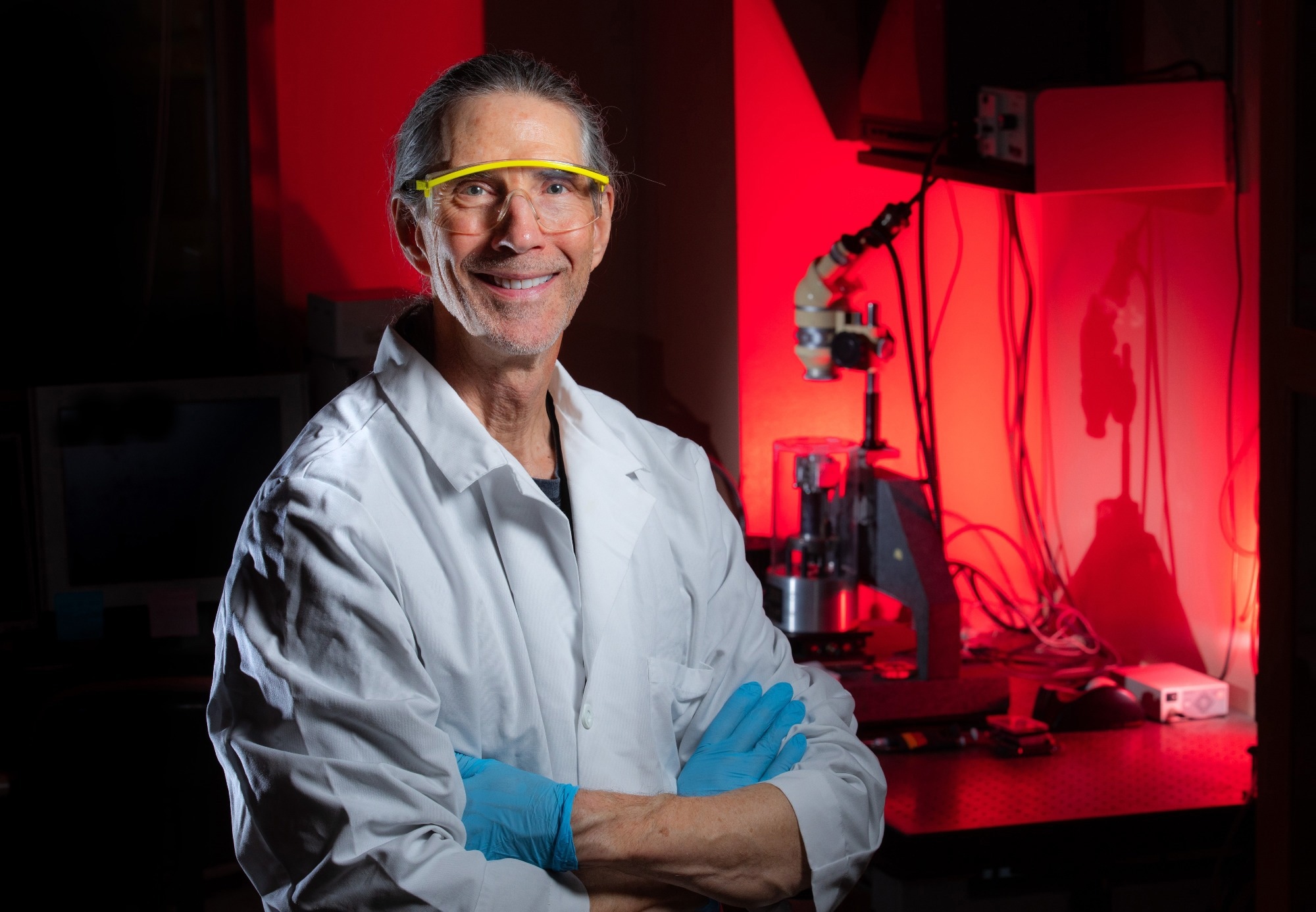For the past 20 years, researchers have been creating nanoparticles from DNA strands by modifying the connections that keep DNA in its double-helical form. This allows them to create self-assembling molecules which could one day have astounding therapeutic uses.
 Eric Henderson in his lab, where the professor of genetics, development and cell biology worked with doctoral student Chang-Yong Oh to create a DNA nanoparticle capable of expressing its own genetic code. Image Credit: Christopher Gannon.
Eric Henderson in his lab, where the professor of genetics, development and cell biology worked with doctoral student Chang-Yong Oh to create a DNA nanoparticle capable of expressing its own genetic code. Image Credit: Christopher Gannon.
Nonetheless, the majority of research on DNA nanoparticles has been on their structure, transforming the genetic code of life into parts needed to assemble small robots. To alter that, Professor Eric Henderson of Iowa State University and recent doctorate recipient Chang-Yong Oh of the Department of Genetics, Development, and Cell Biology want to demonstrate that DNA-based nanoscale materials can communicate their innate genetic instructions.
So far, most people have been exploring DNA nanoparticles from an engineering perspective. Little attention has been paid to the information held in those DNA strands.
Chang-Yong Oh, Ph.D. Student, Iowa State University
Henderson and Oh recently detailed their process for creating DNA nanoparticles that can express genetic code in a study that was accepted for publication in the peer-reviewed journal Scientific Reports. The ability to carry genes expands the possibilities of DNA nanotechnology.
These structures could be both the carrier and the medicine.
Eric Henderson, Professor, Iowa State University
According to Henderson and Oh, their research team was one of the first to produce a DNA nanoparticle that carries its genetic code globally. In 2023, the Iowa State University Research Foundation submitted an application for a patent related to the study.
Successful Structures
Henderson arrived at Iowa State in 1987, but he spent the next 14 years working at his firm, BioForce Nanosciences. He started working on DNA origami, a recently invented technique for making self-assembling complex nanostructures from long single strands of DNA, after returning to Iowa State full-time in 2008.
A nanomachine biosensor that might identify pathogens was created by Henderson and Divita Mathur, a former graduate student who is currently an assistant professor at Case Western University.
One question remained after doing that work: What about the genes these structures contain? Is it possible for DNA origami to convey the genetic information that is incorporated into it?
The initial challenge was to figure out how to make DNA origami using single strands that, instead of the strands typically used to make nanoparticles, had precise genetic patterns. It required several years. The next step, according to Henderson, was to see if the enzyme RNA polymerase, which synthesizes RNA molecules from DNA sequences, could maneuver through the intricate folds of DNA origami.
One specific worry was that crossovers, or the connections between long strands of DNA and small segments of DNA known as staples, which would prevent polymerase from working.
Henderson added, “It turns out they are not, which is counterintuitive.”
The shape of a DNA nanostructure influences transcription efficiency, even if crossings and intricate architecture do not stop the RNA-making transcription process. According to Oh, denser structures generate less RNA, suggesting that the architecture of nanoparticles might be adjusted to either restrict or enhance desired functionalities.
Oh added, “We could make an efficient targeted delivery system that has potential in many fields, including cancer therapy.”
Affordable and Durable
Henderson stated that one of the intriguing aspects of DNA nanoparticles is their potential for accuracy.
“Gene editing is incredibly powerful, but one of the hardest parts of editing genes is only editing the genes you want to edit. So that is the dream, to finesse these nanoparticles to target certain cells and tissues,” Henderson noted.
However, DNA nanoparticles provide further significant benefits. They are affordable, long-lasting, and easy to create. According to Oh, all that is required to make nanoparticles self-assemble is heating a combination and allowing it to cool. Special equipment is not required.
Strands and staples can be produced cheaply, partly due to the widespread use of DNA research. Henderson and Oh are still working their way through a package of staples they paid a few hundred dollars for from a Coralville manufacturer, even though they use them on a regular basis.
Additionally, Henderson stated that even under the most difficult circumstances, the components, which can be kept in powder form, have a lengthy shelf life. This technology has the potential to proliferate.
Henderson concluded, “DNA is very stable. Its been recovered from samples more than 1 million years old.”
Journal Reference:
Oh, C. Y., et. al. (2024) In vitro transcription of self-assembling DNA nanoparticles. Scientific Reports. doi:10.1038/s41598-023-39777-0.
Source: http://www.iastate.edu/